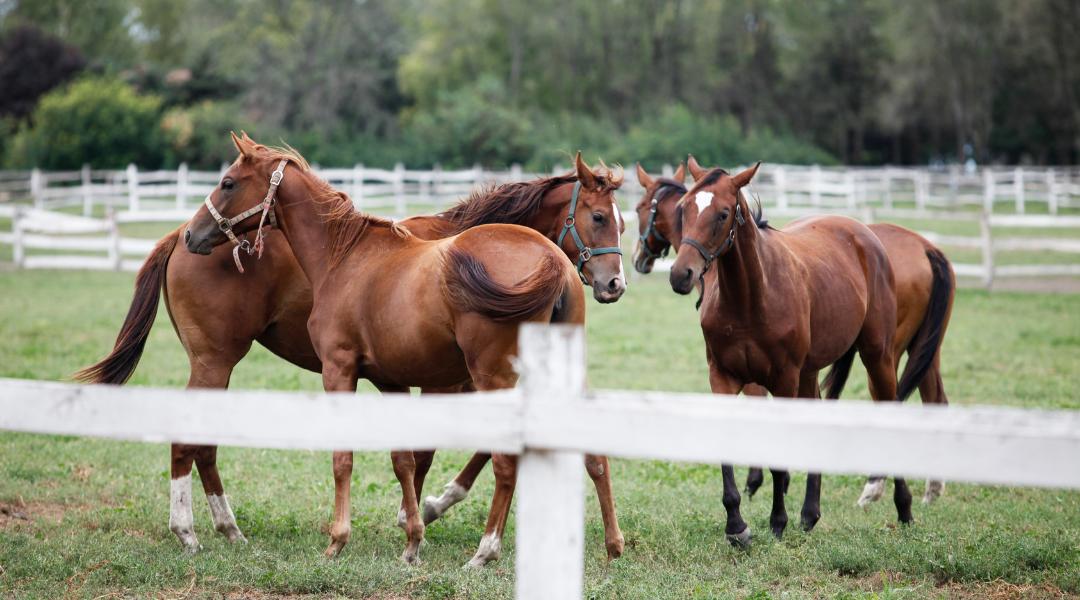Purchasing an equestrian property is a serious task whether you’re a first-time equestrian buyer or looking to upgrade your boarding stables. However, not all horse farms are created equally; different equestrian properties are a better fit for different buyers. Therefore, the right horse farm for you depends on what you plan to accommodate.
When searching for equestrian real estate for sale, there are several things to look out for if you want to choose the finest selection of horse farms. Here are seven things to look out for before making your final decision.
Location
Your equestrian real estate location is crucial since that’s where you and your horses will live. The farther you get from civilization and basic amenities, the cheaper the horse property. If you’re planning to operate a horse boarding facility on your property, you must get a property close to where you can get clients so they can board their horses with you.
While you will pay more for an equestrian real estate property near a big city, you will also charge more for the board. Also, it would help to consider how accessible the equestrian property you plan to buy is. Ideally, you want to be near major thoroughfares but far away from noise and traffic danger.
Budget
Purchasing an equestrian property is expensive, so you must set a realistic budget before you start looking for the property. Don’t forget to factor in all the other fees when setting your budget. Such as arena maintenance, fence maintenance, road and paddock maintenance, trash or manure disposal, purchasing hay for your horses, bedding for your horses, tractor purchase, and maintenance. Once you have established a budget, stick with it and be prepared to let an equestrian property go if it won’t meet your budget.
Zoning Laws
When purchasing your equestrian real estate, ensure that you read and understand the local zoning laws. Zoning can determine how many horses you can have on the property. It also dictates your ability to tear down and rebuild structures, your capability for expansion, whether you can run a boarding facility or other business on your property, and what you can use the land for.
Buyers should conduct due diligence when exploring the legal aspects of owning an equestrian property. When purchasing equestrian real estate, it’s best to hire a consultant to help you review the documents so that you can have horses on it and use the land for whatever you plan.
Structural Safety
The safety of the structures on the land should be your priority. First, examine the equestrian property you plan to buy to see if they have any problems. A professional inspection by someone with years of experience in equestrian real estate is crucial.
Be sure to check out for things like owners’ residences, storage lockers, tack rooms, living quarters for staff or visitors, stables, indoor or covered arenas, breeding facilities, feed barns, sheds and outbuildings, garages, paddock and pasture shelters, kennels or facilities for other livestock. All buildings on the land should be structurally sound and safe. You can replace minor issues, such as broken fences or stalls, but beware of weak foundations, as these are almost unfixable.
Water Supply
Your horses need plenty of water. A typical horse will drink about five to ten gallons of water daily; therefore, readily available potable water is vital for any suitable equestrian property. Other primary uses of water on the farm are for watering and washing horses, dust control in training areas, general cleaning, and, in some cases, irrigation. Irrigation is used to keep your pastures green.
Look for an equestrian property with a modern plumbing system and ensure that the stables and pastures are close to a water source. The plumbing system should be up to date both outdoors and indoors. But if you’re looking to buy a property in a rural location, this may not be the case, and equestrian property with a pond or stream may be what you need.
Grazing and Soil
The quality and size of the grazing grass and soil under it should be considered when choosing an equestrian property. At least, you need one and a half acres of land for one horse, with every new horse needing an extra acre. You should be able to divide the land easily if you want to rotate your grazing spots. While good grazing is essential, too much rich grass in the field can be unsafe for your horse because it increases the risk of laminitis.
The grass on the property should ideally be well-established and hardy. As for the soil, the land should be well drained to reduce the chance of injury. This makes the soil more manageable during the rainy seasons. Avoid heavy clay that can go hard in summer, slog in winter, and highly sandy soil. The best soil for an equestrian property is light loams and chalk-based soils.
Long-Term Potential
If you plan on living and working on your equestrian property for years, you must assess the property’s long-term potential. Consider how you want your property to look after a few years – do you plan to include more horses or possibly extend the size of the pasture or grazing land?
If you intend to raise a family, will the property be large enough for you? Is it suitable, or can it be modified if you plan to retire there? Don’t settle for an equestrian property that limits your dreams. Buying a property that’s a little bigger than what you’ll need doesn’t hurt.
In Summary
Buying an equestrian property is different from buying any other real estate. Therefore, you need an experienced real estate agent specializing in horse properties and the resource to help you finally own the stables you’ve dreamt about.
If you’re considering buying an equestrian property, United Farm Mortgage can help you get equestrian mortgage loans that best suit you. And before you know it, you’ll be bringing in your horses and introducing them to their new home.

